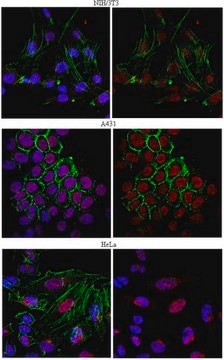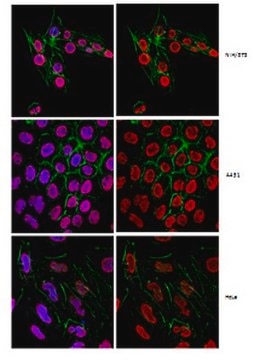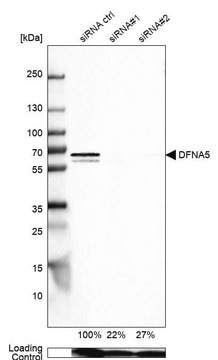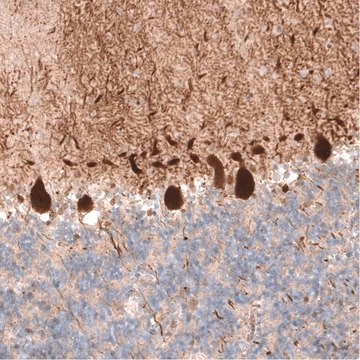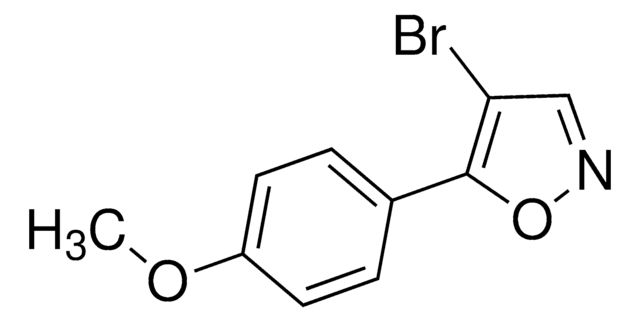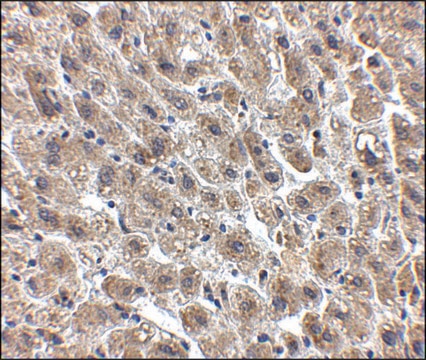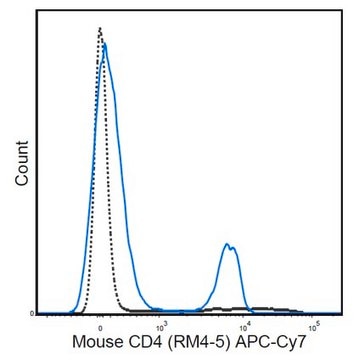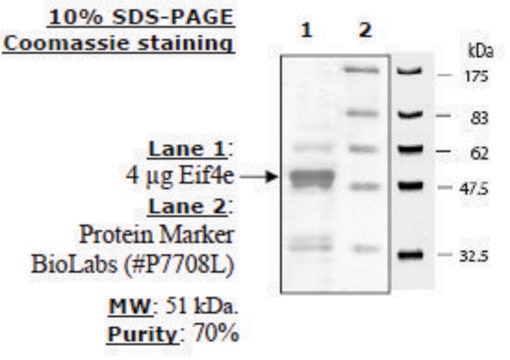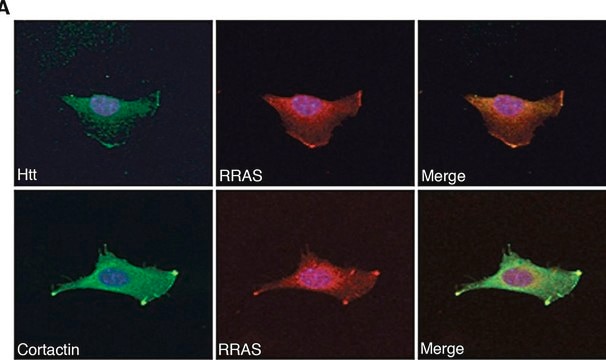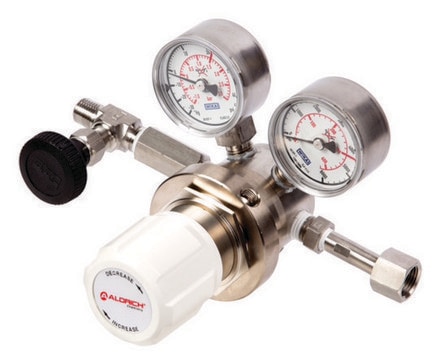MABE419
Anti-m3G-cap, m7G-cap Antibody, clone H-20
clone H-20, from mouse
Synonym(s):
Anti-m3G/m7G-cap, Clone H-20 Anti-m3G-cap, m7G-cap Detection Antibody
About This Item
Recommended Products
biological source
mouse
Quality Level
antibody form
purified immunoglobulin
antibody product type
primary antibodies
clone
H-20, monoclonal
species reactivity (predicted by homology)
all
technique(s)
dot blot: suitable
immunocytochemistry: suitable
immunoprecipitation (IP): suitable
western blot: suitable
isotype
IgG1κ
shipped in
wet ice
target post-translational modification
unmodified
General description
Immunogen
Application
Western Blotting Analysis: A representative lot from an independent laboratory detected m3G-cap in m3G-capped snRNAs from HeLa nuclear extracts (Bochnig, P., et al. (1987). Eur J Biochem. 168(2):461-467.).
Immunoprecipitation Analysis: A representative lot from an independent laboratory immunoprecipitated m3G-cap from prefractionated HeLa S100 extracts (Huber, J., et al. (1998). EMBO J. 17(14):4114-4126.).
Immunocytochemistry Analysis: A representative lot from an independent laboratory detected m3G-cap in m3G-capped U1 snRNPs from digitonin permeabilized HeLa cells (Bochnig, P., et al. (1987). Eur J Biochem. 168(2):461-467.).
Epigenetics & Nuclear Function
Chromatin Biology
Quality
Dot Blot Analysis: 1 µg/mL of this antibody detected m7G-cap in in vitro transcribed RNA containing m7G-cap.
Physical form
Storage and Stability
Handling Recommendations: Upon receipt and prior to removing the cap, centrifuge the vial and gently mix the solution. Aliquot into microcentrifuge tubes and store at -20°C. Avoid repeated freeze/thaw cycles, which may damage IgG and affect product performance.
Other Notes
Disclaimer
Not finding the right product?
Try our Product Selector Tool.
wgk_germany
WGK 1
flash_point_f
Not applicable
flash_point_c
Not applicable
Certificates of Analysis (COA)
Search for Certificates of Analysis (COA) by entering the products Lot/Batch Number. Lot and Batch Numbers can be found on a product’s label following the words ‘Lot’ or ‘Batch’.
Already Own This Product?
Find documentation for the products that you have recently purchased in the Document Library.
Our team of scientists has experience in all areas of research including Life Science, Material Science, Chemical Synthesis, Chromatography, Analytical and many others.
Contact Technical Service